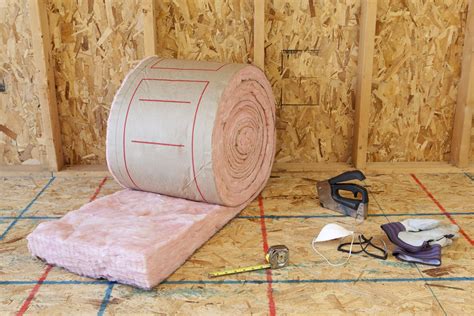Sustainable Insulation Options for Your Walls: A Guide to Eco-Friendly Home Improvement
Improving your home's insulation is a crucial step towards energy efficiency and reducing your carbon footprint. But not all insulation materials are created equal. Choosing sustainable options can significantly impact the environmental impact of your home renovation. This guide explores various sustainable insulation materials, helping you make informed decisions for your walls.
What Makes Insulation Sustainable?
Before diving into specific materials, let's define what constitutes sustainable insulation. A truly sustainable option considers its entire lifecycle, from material sourcing and manufacturing to its performance, lifespan, and eventual disposal. Key factors include:
- Recycled content: Insulation made from recycled materials reduces landfill waste and conserves resources.
- Renewable resources: Utilizing materials from rapidly renewable sources minimizes environmental damage.
- Low embodied carbon: The total carbon emissions associated with the material's production, transport, and installation should be low.
- Biodegradability or recyclability: At the end of its life, the material should be easily recyclable or biodegradable, minimizing its environmental impact.
- Health and safety: The insulation should be free from harmful chemicals and VOCs (volatile organic compounds) to ensure a healthy indoor environment.
Popular Sustainable Insulation Options for Walls
Here are some of the most popular and effective sustainable insulation options for your walls:
1. Cellulose Insulation:
This is a widely used, highly sustainable option made from recycled paper and treated with borates for fire resistance. Cellulose insulation boasts excellent thermal performance, sound absorption, and air sealing capabilities. Its high recycled content and biodegradability make it a top choice for eco-conscious homeowners.
Pros: Excellent thermal performance, good sound absorption, fire-resistant, high recycled content, relatively inexpensive. Cons: Can be messy to install, prone to settling over time (though less so with proper installation).
2. Mineral Wool Insulation (Rockwool and Glasswool):
Mineral wool insulation, including rockwool (made from volcanic rock) and glasswool (made from recycled glass), are inorganic materials with excellent thermal and acoustic properties. Glasswool, in particular, often boasts a high percentage of recycled content.
Pros: Excellent thermal and acoustic properties, fire-resistant, moisture-resistant (especially rockwool), durable. Cons: Can be itchy to handle, potentially more expensive than cellulose.
3. Hemp Insulation:
Hemp insulation is a natural, rapidly renewable, and biodegradable option made from the stalks of the hemp plant. It provides good thermal insulation and sound absorption.
Pros: Sustainable and renewable, good thermal and acoustic insulation, biodegradable, often locally sourced. Cons: Can be more expensive than other options, potentially susceptible to moisture damage if not properly installed and protected.
4. Sheep's Wool Insulation:
This natural insulation offers excellent thermal performance, moisture regulation, and sound absorption. It's also a byproduct of the sheep farming industry, making it a sustainable option for those who already consume lamb or wool.
Pros: Excellent thermal and acoustic properties, naturally fire-resistant, moisture-regulating, non-toxic. Cons: Can be more expensive than other options, availability might vary depending on your location.
5. Straw Bale Insulation:
Straw bale insulation is a more unconventional option, using tightly packed bales of straw as a building material and insulation. It's highly sustainable and offers excellent thermal mass. However, it requires specialized construction techniques.
Pros: Excellent thermal mass, sustainable and renewable, cost-effective if locally sourced. Cons: Requires specialized construction techniques, requires pest control measures.
H2: What are the benefits of using sustainable insulation?
Using sustainable insulation offers numerous benefits beyond environmental responsibility. These include improved indoor air quality (reduced VOC emissions), better thermal performance leading to lower energy bills, enhanced soundproofing, and increased property value. The long-term cost savings often outweigh the slightly higher initial investment.
H2: How much does sustainable insulation cost?
The cost of sustainable insulation varies depending on the material, the thickness required, the installer's rates, and your geographic location. While some options like cellulose might be slightly cheaper than traditional fiberglass, others like hemp or sheep's wool can be more expensive. However, the long-term energy savings often justify the higher initial investment.
H2: Is sustainable insulation as effective as traditional insulation?
Yes, many sustainable insulation options are just as effective, and sometimes even more effective than traditional fiberglass or foam insulation. Their performance is often comparable or even superior, especially when considering factors like thermal mass and moisture regulation.
H2: How do I choose the right sustainable insulation for my walls?
Choosing the right insulation depends on several factors including your budget, climate, building type, and personal preferences. Consider consulting with a qualified insulation contractor or energy auditor to determine the best option for your specific needs and local conditions. They can assess your home's energy efficiency, provide expert advice on installation, and help you choose the most appropriate and cost-effective sustainable insulation for your walls.
Choosing sustainable insulation is a significant step towards creating a greener and more energy-efficient home. By understanding the various options and their benefits, you can make an informed decision that benefits both your wallet and the planet.

